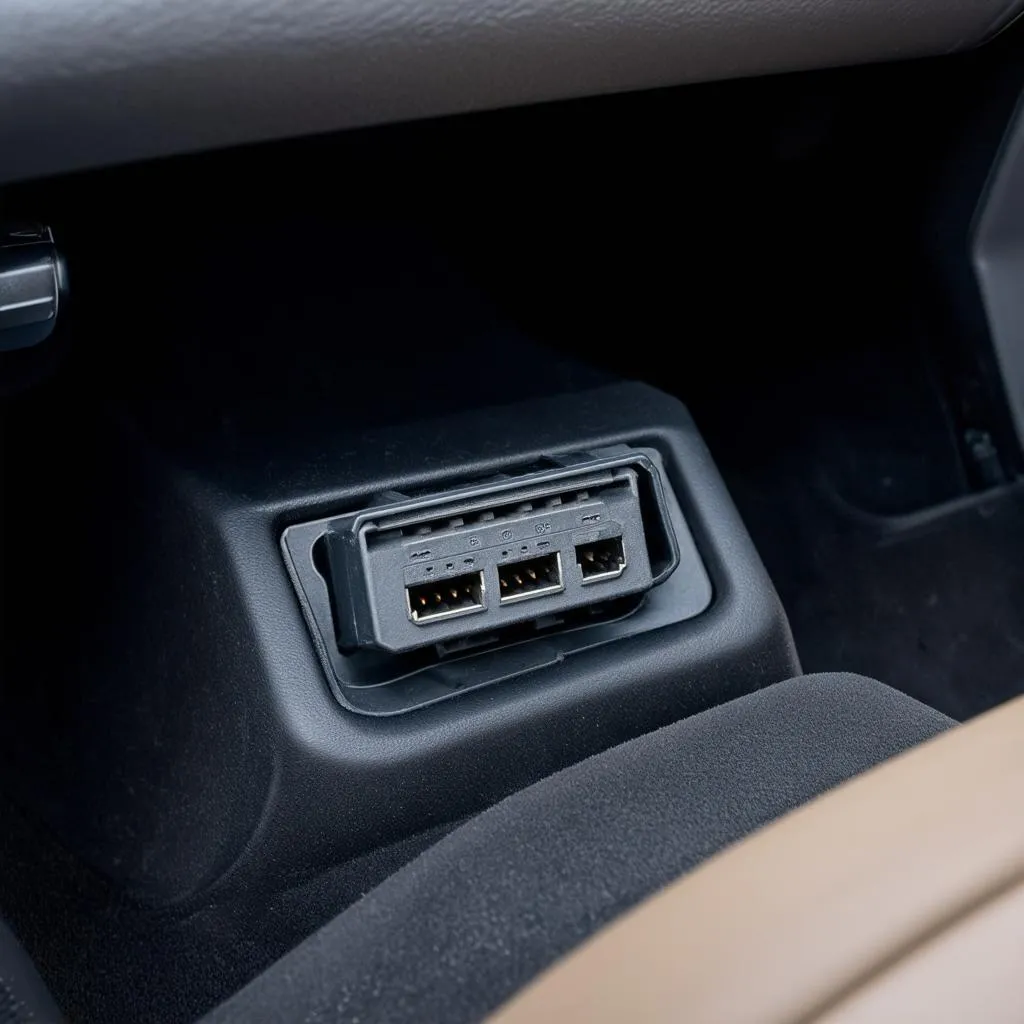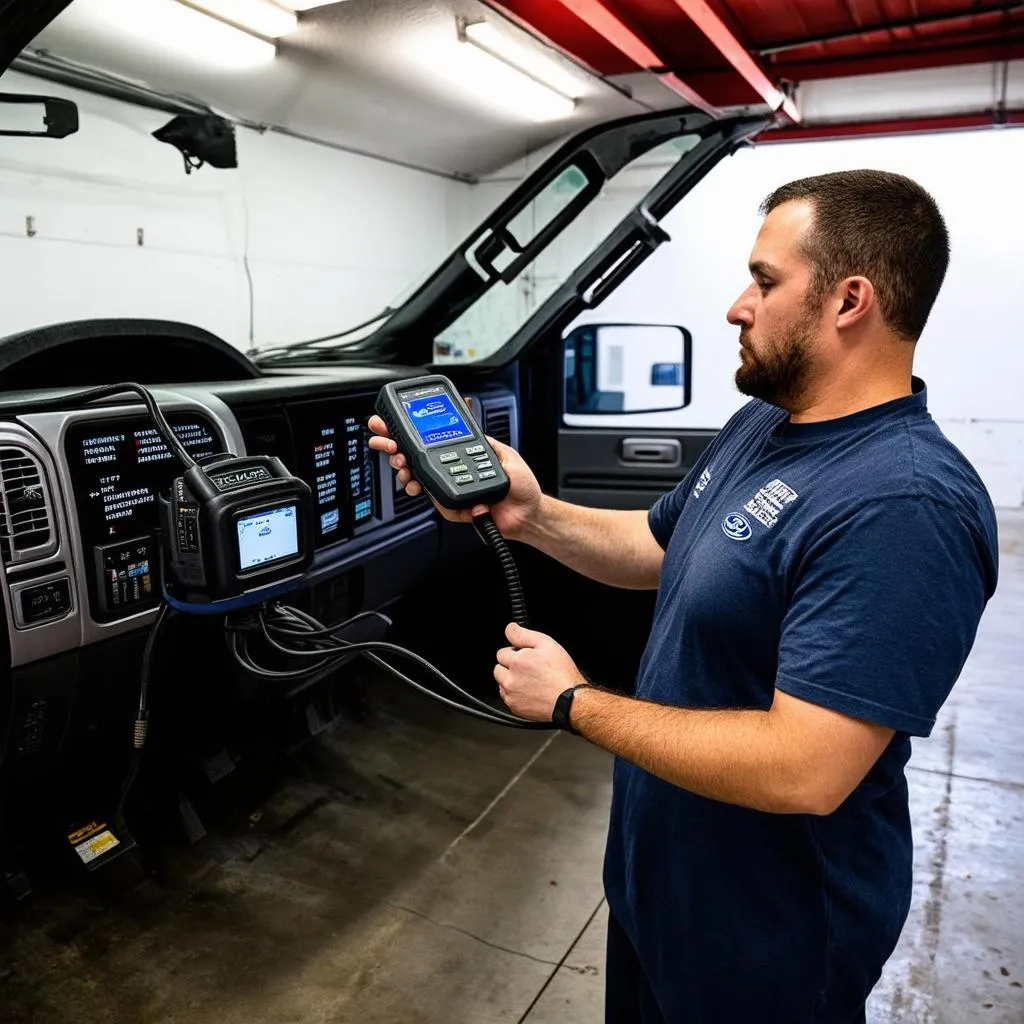“Check engine” light glaring at you from your F250’s dashboard? That little orange glow can feel like a mystical omen, a harbinger of mechanical doom. But don’t panic! It’s simply your truck’s way of talking to you, using a language called OBD II codes.
This isn’t some ancient, cryptic code deciphered only by mechanics with years of experience. It’s a standardized system designed to give you insight into your vehicle’s health. Whether you’re a seasoned mechanic or a DIY enthusiast, understanding these codes can empower you to tackle problems head-on.
What are Ford F250 Obd Ii Codes Trying to Tell You?
Think of OBD II codes as your truck’s internal distress signals. Each code represents a specific issue detected by your F250’s onboard computer.
Let’s say you see the code P0401. This indicates a problem with your Exhaust Gas Recirculation (EGR) system, specifically insufficient flow. Instead of blindly throwing parts at the problem, you now have a starting point for diagnosis.
But why is this important?
- Save Money: Early detection of issues can prevent minor problems from snowballing into costly repairs.
- Peace of Mind: Knowing what’s going on with your truck gives you greater control and confidence on the road.
- Faster Repairs: Providing your mechanic with specific codes streamlines the diagnostic process, saving you time and money.
Decoding Your F250’s Cryptic Messages
While understanding the concept of OBD II codes is essential, interpreting them can feel like deciphering a foreign language. Fortunately, resources are available to help!
- OBD II Code Readers: These handy devices plug into your truck’s OBD II port (usually located under the dashboard) and display the codes being triggered.
- Online Databases: Numerous websites and forums offer comprehensive lists of OBD II codes and their meanings, specific to Ford vehicles.
- Repair Manuals: A good repair manual for your specific F250 model year will provide detailed information about diagnostic codes and potential solutions.
Common Ford F250 Obd Ii Codes
While every truck is different, some OBD II codes tend to pop up more frequently than others in F250s. Here are a few examples:
- P0401: As we mentioned earlier, this code relates to the EGR system.
- P0171: This indicates a lean air/fuel mixture in Bank 1, potentially caused by a vacuum leak or faulty oxygen sensor.
- P030X: This code family indicates a misfire in one or more cylinders, potentially caused by spark plugs, ignition coils, or fuel injectors.
Remember, these are just a few examples, and the specific codes triggered will vary depending on your truck’s year, engine, and overall condition.
When to Seek Professional Help
While some OBD II codes point towards simple fixes, others can indicate more complex issues requiring specialized knowledge and tools.
Here are some signs it’s time to call in a professional:
- Multiple Codes: If you’re seeing a string of different codes, it’s best to have a mechanic diagnose the root cause.
- Recurring Codes: A code that keeps coming back even after repair suggests an underlying problem that hasn’t been addressed.
- Lack of Experience: If you’re not comfortable working on your truck, it’s always best to err on the side of caution and seek professional assistance.
More Than Just Codes: Maintaining Your F250’s Well-being
While OBD II codes are invaluable for diagnosing problems, they’re just one piece of the puzzle when it comes to keeping your F250 running smoothly.
Just like maintaining a positive mindset can attract good fortune, regular maintenance can prevent many issues before they even arise.
- Regular Oil Changes: Fresh oil keeps your engine lubricated and running at its best.
- Air Filter Replacement: A clean air filter ensures optimal airflow for combustion, improving fuel efficiency and performance.
- Spark Plug Replacement: Worn spark plugs can lead to misfires and reduced engine performance.
Beyond the Physical: The Importance of Energy
In many cultures, vehicles are seen as more than just machines. They are extensions of ourselves, carrying us on life’s journey. Just as maintaining positive energy within ourselves is important, ensuring positive energy flows within our vehicles is crucial.
While we can’t offer advice on sage burning or crystal placement, we can confidently say that a well-maintained F250 will not only perform better but also provide a smoother, more enjoyable driving experience.
Your F250 Journey Continues
Understanding your Ford F250’s OBD II codes is the first step towards a long and happy relationship with your truck. By being proactive and addressing issues early on, you can ensure many miles of adventure and reliability.
Need help decoding those pesky codes or want to learn more about your F250? Contact our team of experts on Whatsapp at +84767531508. We’re here to help you navigate the world of automotive diagnostics!
Looking for more information about specific F250 models? Check out our article on the 1999 Ford F250 7.3 OBD Connector.
Don’t let those flashing lights intimidate you! Embrace the power of knowledge and keep your F250 rolling strong.
 Ford F250 OBD II Port Location
Ford F250 OBD II Port Location
 Mechanic Diagnosing Ford F250 with OBD II Scanner
Mechanic Diagnosing Ford F250 with OBD II Scanner